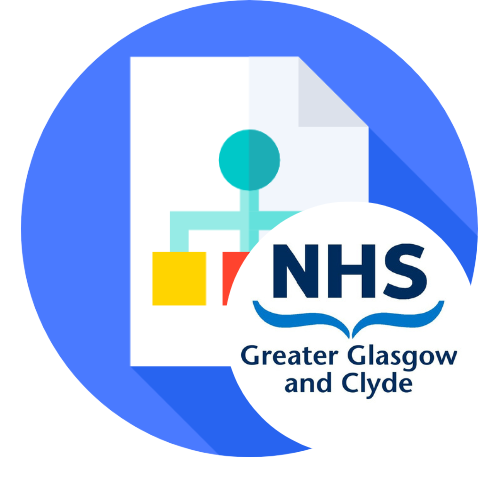Fetal ultrasound assessment should be performed every two weeks in uncomplicated monochorionic twins from 16+0 weeks onwards until delivery.
Scans at 16 and 20 weeks (detailed anomaly scan) should be performed by a medical sonographer. The detailed fetal anomaly scan should include extended cardiac views (5 standard views).
At every ultrasound, the following should be assessed and recorded:
- liquor volume (LV) should be assessed in each sac and deepest vertical pool (DVP)
- Umbilical artery pulsatility index (UAPI)*
- Fetal bladders should be assessed.
- Middle Cerebral Artery Peak Systolic Velocity (MCA PSV)
*See Umbilical Artery Pulsatility Index Chart
Increase the frequency of diagnostic monitoring for TTTS in the woman’s 2nd and 3rd trimester to at least weekly if there are concerns about differences between the babies’ amniotic fluid level (a difference in DVP depth of 4cm or more). Include Doppler assessment of the umbilical artery flow for each baby.
Refer for medical scan if LV DVP>8 cm or <2cm before 20 weeks or LV DVP >10cm or <2cm after 20 weeks. If abnormality confirmed discussion with fetal medicine at QEUH is indicated.
Staging of Twin-to-twin transfusion syndrome (TTTS)
| Stage |
Description |
|
I
II
III
IV
V
|
Poly/oligohydramnios with bladder of the donor still visible
Bladder of the donor no longer visible
Presence of either absent or reverse end-diastolic velocity of the umbilical artery, reverse flow in either twin
Hydrops in either twin
Demise of one or both twins prior to surgery
|
From 16+0 weeks fetal biometry (HC, AC and FL) should be assessed and abdominal circumference (AC) and Estimated fetal weight (EFW) recorded for each twin. The discordance in EFW should be calculated and documented in monochorionic twins at each visit:
([EFW larger fetus − EFW smaller fetus] ÷ EFW larger fetus) × 100
Increase diagnostic monitoring in the 2nd and 3rd trimesters to at least weekly, and include Doppler assessment of the umbilical artery flow for each baby, if there is an EFW discordance of 20% or more and/or the EFW of any of the babies is below the 10th centile for gestational age.
Refer women with a monochorionic twin pregnancy to a tertiary level fetal medicine centre if there is an EFW discordance of 25% or more and the EFW of either of the babies is below the 10th centile for gestational age because this is a clinically important indicator of selective fetal growth restriction.
Selective intrauterine growth restriction (growth discordance of >20%). Approximately 10-15 % of MCDA twins
| Stage |
Description |
|
I
II
III
|
Growth discordance but positive diastolic velocities in both fetal umbilical arteries.
Growth discordance with absent or reversed end-diastolic velocities (AREDV) in one or both fetuses.
Growth discordance with cyclical umbilical artery diastolic waveforms (positive followed by absent then reversed end-diastolic flow in a cyclical pattern over several minutes [intermittent AREDV; iAREDV]).
|
Offer weekly USS monitoring for TAPS from 16 weeks of pregnancy using middle cerebral artery peak systolic velocity (MCA-PSV) to women who pregnancies are complicated by:
- feto-fetal transfusion syndrome that has been treated by fetoscopic laser therapy or
- selective fetal growth restriction (defined by an EFW discordance of 25% or more and an EFW of any of the babies below the 10th centile for gestational age)
Aim for delivery between 36+0 and 36+6 for uncomplicated MCDA twins after which point continuing the pregnancy increases the risk of fetal death
For monochorionic monoamniotic twins birth should be planned between 32+0 and 33+6


